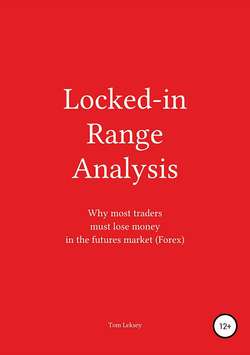Читать книгу Locked-in Range Analysis: Why most traders must lose money in the futures market (Forex) - Tom Leksey - Страница 3
1.2 An Introductory Guide to Futures
ОглавлениеWhat Are Futures?
Standardized (according to quality, quantity, delivery time and place) contracts, for the purchase and sale of financial instruments or physical commodities, for future delivery on a regulated commodity futures exchange.
Who Trades Futures?
Conventionally, traders are divided into two main categories, hedgers and speculators. Hedgers use the futures market to manage (to reduce or limit) price risk associated with an adverse price change. (Examples: airlines hedging fuel costs; jewelry manufacturers hedging the cost of gold and silver; farmers sell futures on the raised crops to hedge against a drop in commodity prices;). Speculators, on the other hand, accept that risk in an attempt to profit from favorable price movement. While futures help hedgers manage their exposure to price risk, the market would not be possible without the participation of speculators. They provide the bulk of market liquidity, which allows the hedger to enter and exit the market in an efficient manner.
Why Trade Futures?
In addition to hedging, futures trading provides the trader (risk-taking investor) with greater flexibility because of liquidity and capital efficiency because of leverage.
Leverage is an amount of money deposited by both the buyer and seller of a futures contract to ensure their performance of the contract terms. The performance bond may represent only a fraction of the total value of the contract, often 2 to 12 %, making futures a highly leveraged trading instrument. Therefore, futures contracts represent a large contract value that can be controlled with a relatively small amount of capital.
What does it mean?
The Euro FX futures contract could have a value of 125,000 EURO, but you would be able to buy or sell this contract by posting a performance bond of about 2,750 USD, which is only 2% of the contract value (EUR/USD 1.1000).
Liquidity
A condition that describes the ability to execute orders of any size quickly and efficiently without a substantial affect on the price.
Liquidity can be described in terms of volume and open interest (abbr. OI). Each unit of volume represents a complete transaction. When one trader buys a contract and another trader sells the same contract, that transaction is recorded as one contract traded. Open interest represents the total number of contracts, either long or short, that have been entered into and not yet offset or fulfilled by delivery. Each open transaction has a buyer and seller, but for calculation of open interest only one side of the contract is counted. Volume and open interest are reported daily and are used by traders to determine the level of activity in a market for a given day or a price movement.
To quickly gauge the liquidity of a market, traders may look at 1) the distance between the best bid and ask prices (bid-ask Spread), 2) the number of limit orders pending in the market at each bid and ask level (Level II) and 3) the frequency with which trades take place (Time & Sales).
